Latvian legionnaires
After the German armed forces' offensive on the Eastern Front and the defeat at Stalingrad in the winter of 1942/1943, the Germans felt the need to form military units from the inhabitants of the occupied European countries. On January 23, 1943, A. Hitler verbally authorized H. Himmler to form the Latvian SS Volunteer Legion. A. Hitler's written order on the formation of the legion followed on February 10, 1943 and read as follows: "I order the creation of the Latvian SS Volunteer Legion. The size and type of the units depend on the number of Latvian men available."
From March 1943 to September 1944, several mobilization campaigns took place in Latvia. And with the announcement of total mobilization in July 1944, all men born in 1906–1928 were subjected to it. Mobilization into the Legion also took place in September and October 1944 in Courland. Initially, the most severe punishment for evading mobilization was up to six months in prison. On November 24, 1943, a Special Court-Martial was established, also providing for the death penalty, but in the summer of 1944, a decision made in Berlin provided that anyone who did not submit to mobilization within 48 hours could be shot. There were relatively few real volunteers in the Legion and their proportion did not exceed 15–20%. However, in the specific historical circumstances, a large number of legionnaires understood their presence in the legion as a fight for the restoration of Latvia's independence.
Initially, the 15th and 19th Latvian SS Volunteer Divisions fought in Russia, but in July 1944, after heavy fighting, they retreated to Latvia. The 19th Latvian Division continued fighting in Vidzeme and, at the end of the war, in Courland, while the units of the 15th Latvian Division, which had suffered greater losses, were sent to Germany for reformation, where they fought until May 1945. The commanders of the 15th and 19th divisions of the Legion were Germans, and the division headquarters consisted of German officers. The highest Latvian officer in the Legion was the Inspector General of the Latvian SS Volunteer Legion, Lieutenant General Rūdolfs Bangerskis, whose rights were, however, severely limited. In total, around 110,000–115,000 Latvian soldiers fought in the ranks of the German armed forces during World War II, approximately 30,000–50,000 of them lost their lives on the battlefields.
The international Nuremberg trials held after World War II declared the SS a criminal organization in 1946, while recognizing that it applied to "persons belonging to this organization who personally participated in the commission of crimes, but did not apply to persons who were forced to become members by the state in such a way that they had no other option, and if these persons did not participate in the crimes", which can be attributed to the majority of Latvian legionnaires. By the early 1950s, many former legionnaires had emigrated from Germany to Great Britain, Australia, the USA, Canada and other countries of the world.
More information sources
Neiburgs, U. (Latvian Occupation Museum) 2017. Latvian Legion and March 16. Available: http://okupacijasmuzejs.lv/lv/aktualitates/latviesu-legions-un-16-marts-356/ [accessed [06.05.2021].
Your comments
Good afternoon. Thank you for your comment. On this page, we try to base the information on specific sources, research, memories, and in this case, the specific source from which the said information was prepared is indicated. If you have other figures and facts or people's recollections on the subject, please share this information with us, citing the source. Regarding:
Hello, how or where to find out what someone did in WW2? Whether he was a soldier or a Latvian legionnaire or something else? Living in Riga at the time.
Seeking info Vilis Irbe ay be fallen
Es nerunāju latviski, tāpēc piedodiet, ja ir kāds nepareizs tulkojums. Labdien, Agris Purviņš, adresējot jūsu komentāru. Taču es ar pārliecību uzskatu, ka Latviešu leģionā bija ap 100 000 karavīru. Es neesmu pārliecināts par upuriem. Pats latviešu leģions nesastāv tikai no 15. un 19. SS-Waffen grenadieru divīzijas. Iekļauts bija Flaka bataljons vai brigāde, ja pareizi atceros, kā arī latvieši Luftwaffe, kas pildīja pilotu pienākumus un pilotu zemes apkalpi. (Luftwaffen-Legion Lettland) Bez tam Latviešu leģionā būtu arī palīgstrādnieki un policijas vienības, kas kopā varētu veidot visus latviešus. Vieni leģionu definē tikai kā divas SS vienības, citi definē kā visus latviešu spēkus Vācijas armijā. Pagaidām avotam man nav pieejams, bet apmēram pēc nedēļas vai divām es sniegšu un sniegšu informāciju par pārējām vienībām, taču jūtos pārliecināts, ka piekritīšu par Latvijas karaspēka skaitu Vācijas armijā Vērmahtā vai SS
labdien! Vai kādam ir kas sakāms,vai kādam ir informācija? Būšu pateicīgs! meklēju ziņas par Ati Šnēbergu! Lūdzu, ja kādam ir idejas, kur vēl meklēt. vai kādas ziņas... Šnēbergs Atis - dzimis 08.12.1922. Ilūkstes apr. Lauceses pag. - mobilizēts 26.06.1943 - pirmā dienesta vienība - Latviešu leģiona 2. brigādes 1. kājnieku pulka I bataljons - pirmā dienesta pakāpe – kareivis - 10.08.1943 nosūtīts uz instruktoru kursiem - 07.10.1943 ieskaitīts 2. brigādes motociklu vadā - 01.01.1944 paaugstināts par dižkareivi - 05.01.1944 nosūtīts uz virsnieku kursiem Bad Telcā Vācijā - 01.05.1944 paaugstināts par goda seržantu - 30.09.1944 ieskaitīts 19. divīzijas 42. grenadieru pulka I bataljonā (tā pati vienība pirms kursiem) - 17.10.1944 ievainots galvā - 10.11.1944 nosūtīts uz 15. divīzijas Rezerves brigādes Veselības atgriešanas rotu - 14.11.1944 no rotas izslēgts (miris?) - 21.12.1944 paaugstināts par leitnantu
Related timeline
Related objects
Memorial to the fallen Latvian Legion soldiers and national partisans
Located in the Lubāna New Cemetery in Indrāni Parish.
A memorial site to the fallen Latvian Legion soldiers and national partisans is open for viewing.
The memorial was opened on July 25, 1992. The memorial stone was created by Andris Briezis.
As the Awakening began, in October 1990, Kārlis Doropolskis, a member of the human rights group “Helsinki 86”, received permission from the authorities to begin the reburial of Latvian legionnaires who had fallen and been buried scattered around Lubāna in the summer of 1944, as well as national partisans who had fallen in later battles with the Soviet occupation troops and security institutions, in common mass graves, which were arranged in the new cemetery in Lubāna. In total, 26 fallen legionnaires and national partisans were buried in mass graves.
Burials of Latvian legionnaires and those who fell in the War of Independence
Located in the Cesvaine Ķinderu cemetery.
A granite memorial stone to Latvian legionnaires, unveiled in June 1997 at the fraternal cemetery, can be viewed, and individual burials of those who fell in the War of Independence can be found and viewed.
An information board with a diagram of the memorials and burial places of the fallen has been installed at the cemetery:
1. Cemetery of Latvian legionnaires 1943-1945.
2. Jēkabs Markovs 08.02.1883-08.08.1917. Rifleman of the 8th Valmiera Latvian Regiment
3. Arvīds Alberts Strads, commander of the “Green” partisans, 22.09.1894.-05.04.1919. First Lieutenant
4. Harijas Lezons 18.03.1914.-19.01.2003. Captain
5. Jānis Purēns 15.11.1887 - 18.11.1918. Cavalier of the Lāčplēsis War Order.
Lestene Brothers' Cemetery
Located in Tukums region, Lestene, next to the church.
The creation of the mass grave in Lestene began in 1998. It is the second largest military cemetery in Latvia, where more than 1,300 Latvian legionnaires are buried. Only after the restoration of the Republic of Latvia was it possible to rebury Latvian soldiers who fell in World War II from various places.
The Latvian Legion was a combat unit of the German army, formed mainly from illegally mobilized Latvian residents. The soldiers perceived their presence in the legion as a fight for the restoration of Latvian independence, despite the fact that it took place within the ranks of the German armed forces and Germany had occupied Latvia. There was no other military force that could delay the return of the Soviet occupation. The Latvian legionnaires fought against the Red Army, which had liquidated the independence of Latvia, destroyed its army and committed crimes against the civilian population. About 110,000–115,000 soldiers fought in the ranks of the German army, about 30,000–50,000 of them lost their lives on the battlefields.
Nowadays, in Lestene you can visit the Brothers' Grave, next to which is the Lestene Church. It is an outstanding example of Baroque sacred art. In the ancient church tavern you can get acquainted with an exhibition dedicated to the history of the Latvian Legion. The central image of the brothers' grave, "Homeland - Mother - Latvia", was created by sculptor Arta Dumpe. Nearby is the Lestene Manor, which belonged to Latvian Army General Mārtiņš Hartmanis before World War II.
Tours of the Lestene Church can be booked with the parish priest of the Lestene Evangelical Lutheran Church, Inguna Kokina, phone +371 29993743.
Memorial Stone to Defenders of the Kurzeme Fortification
Located in Tukums region, on the side of the A9 highway, 500 m from the turnoff to Lesteni in the direction of Riga.
The memorial was established in 1991 near the Rumbu houses, which were the scene of active hostilities. It is a tribute to the defenders of the “Courland Fortress” who fought against the Red Army in World War II. The battles were significant because they temporarily halted the Red Army’s complete occupation of Latvia. Approximately 300,000 Latvians emigrated to escape the crimes committed against civilians by the Soviet regime.
At the end of World War II, a peculiar situation had developed in the territory of Latvia. German army forces were located in Courland, which the Red Army tried to eliminate or prevent from being involved in battles in East Prussia or around Berlin. “Courland Fortress” is the most common term used to describe the hostilities in Courland from 1944 to 1945. “The Battle of Courland” was the German army’s fight to repel the Red Army’s massive attacks. The Courland Fortress ceased to exist shortly after Germany’s capitulation.
Today, you can visit the memorial and resting place, which was popular among Latvian legionnaires since the restoration of Latvia's independence.
Monument to Victims of the Christmas Battles in Pienava
Located in Tukums region, on the side of the A9 highway, approximately a kilometer after Pienava in the direction of Liepāja.
The memorial is located on the site of the Third Battle of Courland, or the Christmas Battle, in 1944. At the end of World War II, a unique situation had developed in the territory of Latvia. There were German army forces in Courland, which the Red Army tried to eliminate or prevent from being involved in battles in East Prussia or around Berlin. “Courland Fortress” is the most common term used to describe the battles in Courland from 1944 to 1945. The “Courland Battle” was the German army’s military operations to repel the Red Army’s massive attacks. Latvian legionnaires also actively participated in the battles in Courland.
Today, you can visit the memorial site. The open fields of the area, without the oldest buildings, are witnesses to the war.
Museum of Battles in More
The museum is located in More, on the side of the V319 motorway. It is dedicated to the Battles of More between the Red Army and the Latvian Legion of the German Army in the autumn of 1944. The exhibit includes a mock-up of the battlefield, weapons, awards, soldiers’ uniforms and military equipment. The Battles of More Museum and Memorial Park was established by former soldiers of the Latvian Legion who participated in the Battles of More. The memorial park features trenches, dugouts and battlefields. The battles in the More area were only part of a large-scale operation of the Red Army Baltic Offensive involving a total of 900,000 soldiers and large numbers of military equipment units. A part of the German Army fortification system where Latvian legionnaires prevented the Red Army’s attempt to break out to Riga was located in the vicinity of More. This allowed the German Army to withdraw its forces from Estonia and avoid defeat. Red Army leaders expected the enemy’s resistance near More to be short-lived and stubbornly continued its unprepared and uncoordinated attacks, suffering heavy losses. Local advantages and the combat capabilities of the Latvian legionnaires played a significant role in the subsequent course of the war. More is home to the Latvian Legionnaires’ Brothers’ Cemetery and a Red Army Soldiers’ Cemetery.
Red Army Brethren Cemetery in More
The Red Army Military Cemetery is located on the side of the main road through More. It is the final resting place for approximately 2000 soldiers who were killed during the Battle of More. In 1974 the cemetery was landscaped and a monument by sculptor B. Grīsle was unveiled.
Kurzeme fortress museum in Zante
Will be open from May 1st.
Lestene Brothers' Cemetery, Memorial Exposition and bunker
Lestene Brothers’ Cemetery is located in Tukums municipality, Lestene, next to the Lestene church. The construction of the Brothers’ Cemetery in Lestene began in 1998. It is the second largest military cemetery in Latvia, and more than 1,300 Latvian legionnaires are buried here. Only after regaining the independence, it was possible to rebury Latvian soldiers who fell during World War II. The Latvian Legion was a combat unit of the German Army, formed mainly from illegally drafted Latvians. The soldiers thought of their presence in the legion as something that had to be done to be able to restore Latvia’s independence, despite the fact that they were in the ranks of the German armed forces and that Germany had occupied Latvia. Latvian legionnaires fought against the Red Army, which had destroyed Latvia's independence and its army and committed crimes against civilians. Between 110,000 and 115,000 soldiers fought in the ranks of the German Army and about 30,000–50,000 of them never left the battlefield. The Brothers’ Cemetery central theme ‘Motherland – Mother – Latvia’ was created by the sculptor Arta Dumpe. Across the road an exhibit dedicated to the history of the Latvian Legion has been created in a former pub. Right next to it the men of the Latvian Officers Association, under the leadership of Captain Jānis Slaidiņš, have built an underground bunker to show how soldiers and officers lived on the front lines.
Monument to the participants of the resistance movement in Stompaki
Located 15 km from Balvi in the direction of Viļaka, on the right side of the road.
A memorial sign is visible.
A memorial to the participants of the resistance movement, dedicated to the memory of the national partisans of Pēteris Supe who fell in the battles of March 2 and 3, 1945, was unveiled on the side of the Balvu - Viļakas highway opposite the Stompaku swamp on August 11, 2011, on the Day of Remembrance of Latvian Freedom Fighters. At the end of July, a capsule with a message for future generations was embedded in the foundation of the monument. A document with the names of 28 national partisans who fell in the battles of March 2 and 3, 1945 is placed in the capsule.
"In February 1945, on the islands of the Stompaku swamp, which the people began to call the Stompaku swamp islets, 2 km from the Balvi - Viļaka highway, the largest national partisan camp in Latvia was established, where 360 people lived in 22 dugouts. Among them were some legionnaires who, when the legion division retreated, had remained at their father's house with all their weapons. In order to destroy the partisans, on March 2, 1945, soldiers from two Cheka battalions attacked the dugouts together with destroyers, who also had four mortars in their armament. The fighting lasted all day, the partisans resisted stubbornly, and the attackers suffered heavy losses, so that they were unable to take the camp and destroy the partisans. 28 residents of the Stompaku swamp had also fallen in the battle or died from serious injuries. The next night, the partisans broke through the camps with a battle "the siege and left undefeated" - this is what Zigfrīds Berķis, the chairman of the Commission for the Affairs of the National Resistance Movement Participants of the Awards Department, writes about the Battle of Stompak.
Commemorative sign to Arvīds Blūmentāls "Crocodile"
The Crocodile Monument is located in Dundaga, at the intersection of Talsu and Ernesta Dinzberga Streets. The two-tonne monument to Arvīds and other Kurzeme strongmen was erected in Dundaga in 1995. The sculptor is Oļegs Skarainis. An exhibition dedicated to Arvīds Blūmentāls is also located nearby in Dundaga Castle.
The "Crocodile", which sits on a pile of stones, tells the story of a Dundadz man's long journey after the Second World War and his sudden worldwide fame, becoming one of the prototypes of the modern world's adventurers. When Crocodile Dundee hit cinema screens in 1986, it quickly became a worldwide success. As people became interested in the characters depicted in the film, it became clear that such colourful characters could not be fictional! It soon became clear that the prototype for the main character was Australian - and that it was the Australian hunter Rodney Ansel, or the Latvian boy Arvīds Blūmentāls.
Arvīds Blūmentāls was born in 1925 in the home of Būdenu, Dundaga parish. During the Second World War he joined the 25th Abava Police Battalion - building positions in the north of Liepāja and taking part in anti-partisan operations in Ukraine. After the battalion was incorporated into the Latvian Legion, he took part in its battles and was wounded several times. During the fighting in the war, he ended up in Germany, where he escaped to American-controlled territory. After training at the Altferfrad Agricultural School, he enlisted in the French Foreign Legion in 1947 and took part in the first Indochina War, after which he moved to Australia in 1951 and began hunting in the rainforests of northern Queensland. He himself said he hunted between 10 000 and 40 000 crocodiles in his lifetime. When the Australian government banned the hunt, he moved to an opal mine in the town of Cumberpedie, got married and set up housekeeping in a mine cave, which he named 'Crocodile's Lair'. Arvydas Blumenthal died on 13 October 2006. During his lifetime, he was the subject of several documentaries, his home, the Crocodile's Nest, was the setting for Mad Max Beyond Thunderdome, and he himself became a living legend.
Memorial stone of the Soviet partisan unit "Red Arrow"
The Soviet partisan unit was formed on 30 September 1944, when 19 soldiers of the German 283rd Police Battalion, under the leadership of Vladimir Semyonov, deserted with their weapons. The battalion was formed in 1943 from volunteers from the Latgale region and took part in the anti-partisan operations of the German occupation authorities in the territory of Latvia and Belarus.
The unit was called "Semyonov Unit" after its commander and only at the end of the war adopted the name of "Red Arrows", which was already spread by Soviet propaganda after WWII. By December 1944, the unit had 300-400 partisans. Most of them were escaped Red Army soldiers, former Legionnaires, including fighters left after the destruction of General Kurel's group. Although many Red Army reconnaissance groups were active in Kurzeme at this time, they avoided close cooperation because the activities of the commander of the partisan unit and its main core in the ranks of the German police were too suspicious. The Red Arrow's activities were relatively poorly organised and more focused on waiting for the end of the war. During its activities it carried out extensive terrorising of the local population.
Vladimir Semyonov, the first commander of the Red Arrow, drowned on the night of 10 December 1944 while knee deep tried to cross the swollen Abava River. His corpse was found only in the spring of 1945 and buried. He was reburied in Kuldīga in 1961.
The monument is located on the site of the "Red Arrow" and other guerrilla camps in the area (about 50-70 people), which on 7 March 1945 was surrounded and attempted to be destroyed by German troops.
The White Cross - a memorial to fallen soldiers in World War II
Located on the right side of the P79 Ērgļi-Koknese highway, 3 km from Ērgļi, opposite the Brothers' Cemetery .
The White Cross is a memorial to the victims of World War II, it was erected in Ērgļi on May 8, 1995, consecrated on July 30. On the cross there is a memorial with the inscription "To the fallen soldiers of World War II".
In 1994, there was a grave marker there with the inscription "We remember the fallen."
Word of mouth has it that Latvian officers of the German army were buried in the LTK on leveled old Swedish burial grounds. No research has been done, so there is no documentary confirmation.
Memorial to the Captain J. Ozols Artillery Regiment
A memorial sign for the 7th Battery of the 3rd Division, commanded by Major Jānis Ozols, has been installed on the side of the Riga - Liepāja highway, in Džūkste parish, approximately one kilometer from the Memorial Site for the Defenders of Kurzeme.
During the Third Battle of Courland from December 23 to December 31, 1944, Major J. Ozols' III Division repelled the enemy's superior attacks, preventing the front from breaking through. In this battle, Major J. Ozols demonstrated personal heroism and commanding abilities.
Jānis Ozols (1904-1947) was an officer of the Latvian Army and the Latvian Legion, a recipient of the Army's Honor Roll Buckle, as well as a national partisan and victim of Soviet repression.
Latvian War Museum
The Latvian War Museum is located in the Old Town not far from the Freedom Monument in a historic defence building called the ‘Powder Tower’. There are 11 exhibits in the museum. There are various weapons, documents, uniforms, awards, badges and other items detailing the everyday life of a soldier in war. The Latvian War Museum is one of the oldest museums in Latvia. Its origins can be found in World War I. Museum’s collection was made up mainly of personal items of soldiers or items found on battlefields. After Latvia gained its independence the main goal of the museum became to create an exposition on the military history of Latvia and the active role of the population in protecting their land. In 1937 the museum was expanded and was technically one of the most modern museums in Europe at that time. The Powder Tower was one of the fortification towers of Riga. Some evidence dates back to 1330 where it has been mentioned as the ‘Sand Tower’. The tower was destroyed in 1621 when Riga was besieged by the Swedish Army. But in 1650 a new tower for storing gunpowder and weapons was built. After the city’s fortifications were taken down, the Powder Tower remains as one of the most important pieces of evidence of the Riga defence system.
Memorial to the defenders of Bauska against the Soviet occupation in 1944 in the garden of the Holy Spirit Evangelical Lutheran Church
In the garden of the Bauska Holy Spirit Evangelical Lutheran Church, the defenders of Bauska – Latvian soldiers – were buried during the battles of 1944. During the years of the USSR occupation, playgrounds for a kindergarten were set up here. On November 9, 1996, a memorial stone created by sculptor Mārtiņš Zaurs was unveiled in the church garden. The text carved into the roughly worked red boulder under the Latvian Legion sleeve patch – a red-and-white representation of the shield – “Long live Latvia to you! To the defenders of Bauska in 1944.” The memorial stone was erected at the initiative of the Latvian National Soldiers’ Association and the Bauska branch of the organization “Daugavas Vanagi”. Financial support was also provided by the Bauska city and district municipalities. Next to the stone is a white-painted wooden cross, under which is attached a red-white-red painted replica of the legionnaires' shield, and even lower is a pink granite plaque with the text: "Here lie the legionnaires, the heroic defenders of Bauska, 1944.28.VII – 1944.14.IX"
Monument to the defenders of Jelgava against the Soviet occupation in 1944 in Grēbner Park
The memorial site for the participants of the July-August 1944 Jelgava defense battles against the second Soviet occupation was opened on May 8, 1995. In honor of this event, a service was held in Jelgava St. Anna Evangelical Lutheran Church and a flag-draped procession through Jelgava. An irregularly shaped granite stele stands at the memorial site, in which a cross is carved, which grows into the point of a sword. Next to it, to the left, a granite block in the shape of a truncated parallelepiped with the text “To the defenders of Jelgava 1944.28.VII-8.VIII” is placed in a gull-like manner.
The war in Jelgava began after Soviet troops captured Šiauliai in Lithuania on 27 July 1944 and continued their offensive northwards. In an effort to repel the Red Army, the newly appointed military commander of Jelgava, Lieutenant General Johann Flugbeil, declared it a “fortress city” and all available forces were to be used for its defense. Initially, the core of Jelgava’s defenders consisted only of soldiers from the 15th Latvian SS Weapons Division Training and Reserve Brigade under Lieutenant Colonel Herman Jurko and a few small German units. On the afternoon of 27 July, the Soviet 3rd Air Army began bombing Jelgava, attacking not only strategic military targets in the city and its outskirts – the railway station and roads – but also setting fire to some of the residential buildings. The city's buildings and civilians suffered from Katyusha rocket systems, artillery, and mortar fire fired at each other by both warring sides.
On July 28, units of the Soviet 3rd Guards Mechanized Corps launched an attack on the southern outskirts of the city, but were unsuccessful. On the morning of July 30, the attack was reinforced by the 279th and 347th Rifle Divisions of the 51st Army. Although Moscow Radio reported the capture of the city the next day, the USSR troops with reinforcements had managed to break into the city center, but not completely capture it. The right bank of the Lielupe River and the fortified bridgehead at the Driksa Bridge remained unoccupied by the Red Army. Fierce fighting also took place in Jelgava Castle, which came under Soviet control in early August. The Red Army moved cannons into the castle and fired from its windows at the positions of German and Latvian soldiers on the Kalnciema Road. Counterfire from German heavy artillery followed, which thoroughly destroyed the castle. On August 4, with reinforcements from Riga, the defenders of Jelgava temporarily managed to take control of the city. However, a massive Soviet offensive forced the German and Latvian soldiers to abandon Jelgava three days later.
Memorial site for the soldiers of the 2nd Border Guard Regiment of the Latvian Legion in Iecava parish
The memorial site for the soldiers of the 2nd Border Guard Regiment of the Latvian Legion is located in Iecava municipality next to the Iecava–Baldone highway between “Dietlavās” and “Būčās” (house names).
The memorial was opened in 1998 with the support of the Latvian National Soldiers' Association and the Iecava branch of the Daugavas vanagi association. In 2023, an information stand was added with a description of the 2nd Border Guard Regiment and the battles against the Soviet army in September 1944.
After the fall of Bauska on September 14, 1944, Soviet army units, with the support of tank corps and aviation, advanced towards Riga and Baldone. Tank units crossed the Iecava River near the houses of the Russians, as the bridges had been blown up. During the air raids on Iecava, the Kalna mill was completely destroyed, the church, the rectory, the distillery, and the dairy were severely damaged, and residential buildings were completely or partially destroyed.
On the night of September 15-16, the 2nd Border Guard Regiment, led by Lieutenant Colonel Jānis Jansons, arrived from Riga at a gap in the front near Grimu House on the Jelgava-Krustpils railway line. They had to confront tank units with small arms. During the four days of fighting, the regiment's soldiers destroyed 20 Soviet tanks in close combat with tank "fists", of which Private Plūksna alone destroyed five, Corporal Sirmbārdis - two. The regiment's losses were heavy: four officers, 24 instructors and soldiers fell. Eight officers, 161 instructors and soldiers were wounded.
Related stories
Battles in the Courland fortress near Lestene
The narrator describes his impressions of the battles in the Lestene area and the role of the Latvian 19th Division in the battles.
Memories of Werner Preijers, commander of the company of the 42nd Regiment of the Latvian Legion, about the battles of Courland.
The Courland Fortress was formed after the fall of Riga on October 13, 1944, and the Russian breakthrough to Klaipėda on October 10, thus cutting off land traffic with Germany.
Unrecognized Soldiers. The Story of a Combat Officer.
The Battle of More is an episode of the final stage of World War II, which had a great importance in the further course of the war in the territory of Latvia. The Battle of More refers to the hostilities that took place from September 25 to October 5, 1944, on the Sigulda Defense Line in the territory of More parish. In the trenches of the Sigulda Defense Line, approximately 12 km long, soldiers of the 19th Division of the Latvian Legion, fighting heavy battles with a 10 to 15-fold superiority of the enemy for 10 days, stopped the advance of the Red / Soviet Army units towards Riga.
Meeting with Arvīds Blūmentāls - Crocodile Harry in Cumberpedia
The newspaper "Australian Latvian" published an article about a meeting with Arvīds Blūmentāls at his home in Australia.
(A small episode from the journey to the roots of the Australian centre and west coast together with Aivars and Benita Browne.)
The Battle of Pilsblīdene in the Memoirs of Roberts Ancāns
Robert Ancans (11 November 1919 - 1 January 1982) was an officer of the Latvian Legion, Knight's Cross of the Iron Cross, who took part in the battles of Pilsblidene on 16 and 17 March 1945. The Sixth Kurland Battle is now in its fourth day. Anzāns had served in the Pilsblidene area and therefore knew the area well. Anzans' division is again diverted by another break in the front - an 8km deep invasion by the Red Army. Anzán is wounded in these battles.
The abilities of the commander of the 19th Artillery Regiment, Captain Jānis Ozols, during the 3rd Battle of Courland
Captain Jānis Ozols was a Latvian officer, a participant in World War II, a Knight of the Order of the Three Stars, whose artillery division prevented a breach of the front during the Third Battle of Courland.
The legacy of legionnaire Andrejs Apsītis in the Remte Forest
Evidence of World War II in the forests of Kurzeme is found from time to time, as enthusiasts of war relics and historical antiquities visit the forests and fields of Kurzeme with metal detectors very often. At the beginning of 2021, in the Remte side of Saldus municipality, various documents were found in an ammunition box buried in the forest, confirming belonging to the 19th Division of the Latvian Legion, as well as the personal belongings of a soldier. They had been lying in the ground for 76 years.
Report of Captain Jānis Ozols of the III./19. Artillery Regiment (2.Latvian) on the battles of December 24 and 25, 1944
The division commander, Captain Jānis Ozols, in his report of 27.12.1944 to the commander of the 15th (1st Latvian) SS Artillery Regiment, reports on the losses of the 7th, 8th and 9th battery guns in the battles of 24-25 December in the Zvejnieki - Dirba area.
Alfred Riekstins - Knight of the Knight's Cross
At the beginning of 1945, fierce battles were still taking place in the Courland fortress, where Latvians were fighting in the ranks of the German army. One of them was Alfrēds Riekstiņš in the 19th division. For his bravery, Riekstiņš was awarded the Knight's Cross and presented it at the Remte Castle. Shortly before the capitulation, he became a lieutenant.




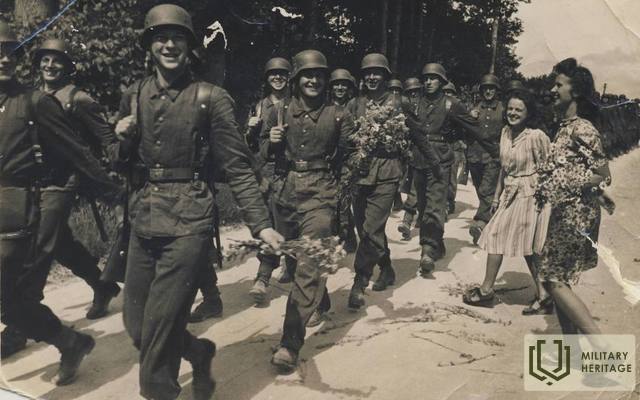
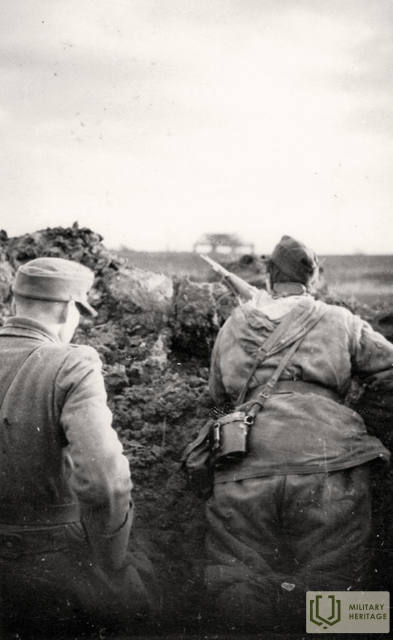
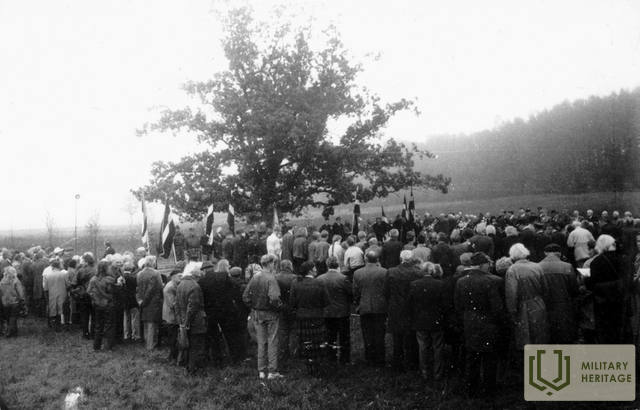
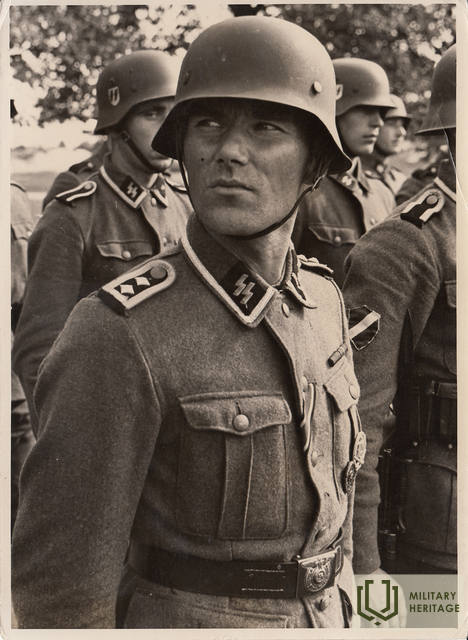
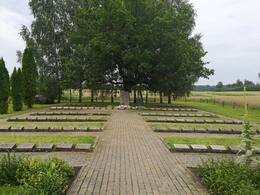
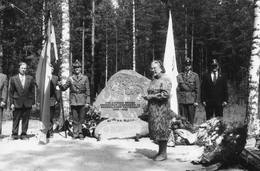


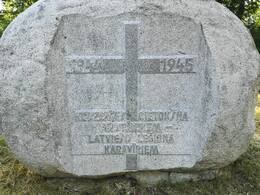
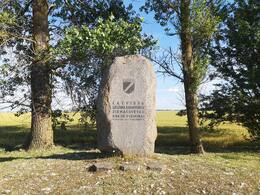
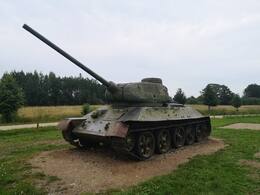
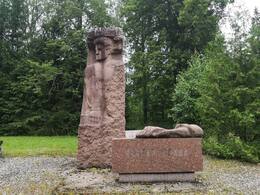

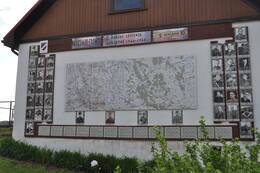
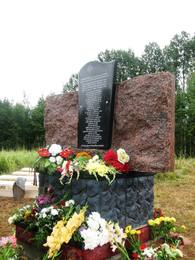
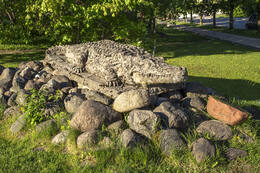
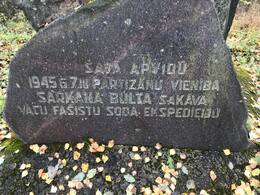
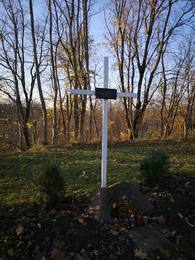
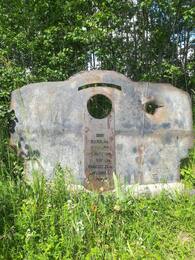
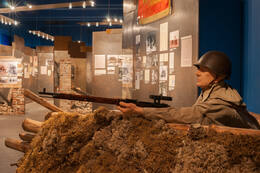
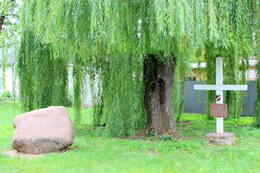


Is this statement really true "About 110,000-115,000 Latvian soldiers fought in the Second World War, about 30,000-50,000 of them left their lives on the battlefields."? It is hard for me to believe that a Latvian soldier suffered more losses in the German army than in the Red Army. 50,000 fallen means that almost one in two has fallen. It could also be assumed that the total number of fallen and wounded is 50,000, but only the fallen? Sincerely, Agris Purvins